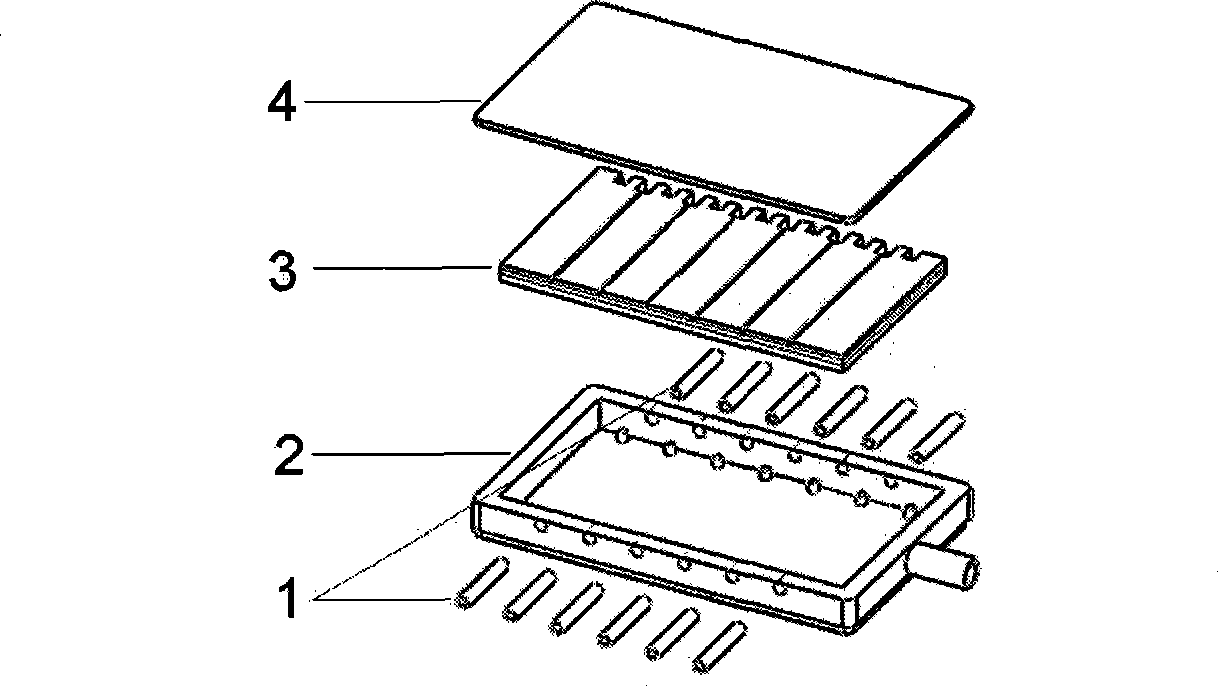Continuous flow cell electric amalgamation chip based on silicon structure on insulator
A silicon-on-insulator, electrofusion technology is applied in the field of biological cell electrofusion devices, which can solve the problems of corrosion resistance, anti-oxidation ability, weak precise control of cells, easy to be corroded, etc., so as to improve the efficiency of cell fusion, The effect of improving biocompatibility and improving electrical performance
- Summary
- Abstract
- Description
- Claims
- Application Information
AI Technical Summary
Problems solved by technology
Method used
Image
Examples
Embodiment Construction
[0036] see figure 1 and figure 2 The cell electrofusion chip consists of a shell 2, a microelectrode array chip 3 fixed in the shell, a sample inlet and outlet conduit 1 connecting the inside and outside of the shell, and a silicon glass sheet 4 packaged on the surface of the shell.
[0037] For the structure of the housing see image 3 , image 3 A is a perspective view of the casing. image 3 B is the top view of the shell, image 3 C is the right side view of the case, image 3 D is the front view of the shell, the center of the shell 2 is an inner cavity 5 for accommodating the chip, the bottom has pins 9 corresponding to the microelectrode array of the chip, and the two side walls have a sample inlet 7 and a sample outlet 8, and in the shell 2. A cylinder 6 is arranged on the outside to facilitate the removal of the whole device.
[0038] For the structure of the microelectrode array chip see Figure 4 A. Figure 4 B and Figure 4 C, the microelectrode array chi...
PUM
 Login to View More
Login to View More Abstract
Description
Claims
Application Information
 Login to View More
Login to View More - R&D
- Intellectual Property
- Life Sciences
- Materials
- Tech Scout
- Unparalleled Data Quality
- Higher Quality Content
- 60% Fewer Hallucinations
Browse by: Latest US Patents, China's latest patents, Technical Efficacy Thesaurus, Application Domain, Technology Topic, Popular Technical Reports.
© 2025 PatSnap. All rights reserved.Legal|Privacy policy|Modern Slavery Act Transparency Statement|Sitemap|About US| Contact US: help@patsnap.com



